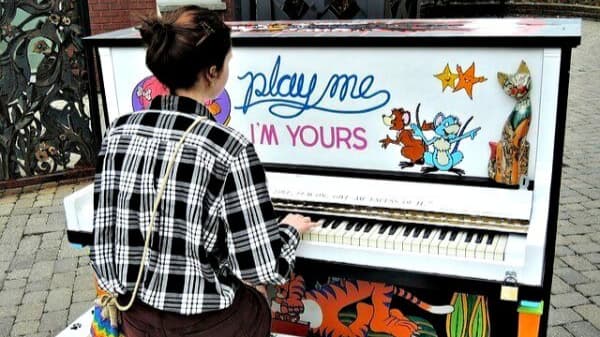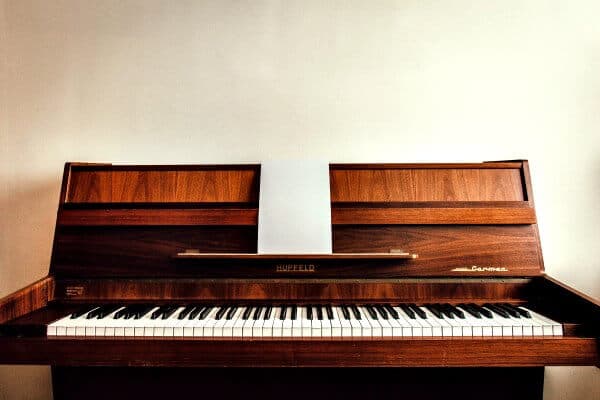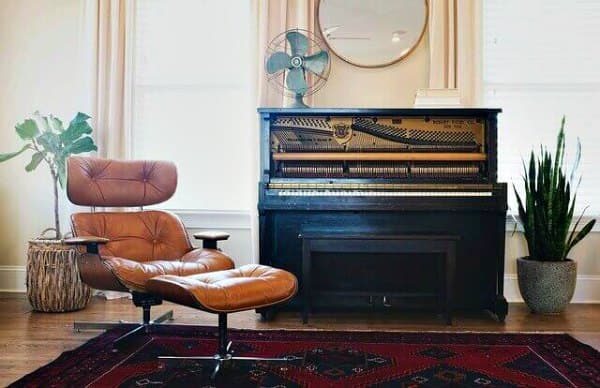- Home
- Learn to Play Piano
- Learning the Piano
Learning The Piano in 20 Steps
This article may contain compensated links. Please read the disclosure for more info.
Teaching yourself piano in 20 steps! (Eh? Can you really do that? ) Learning the piano, with or without a piano teacher, is a process that can be accomplished in any number of ways...
However, in order to get the most results as early as possible, not learning things in the wrong way, and not having to relearn any aspect (horror!)- for all of us that want fast results, in this article I'll give you a plan on what steps you can take when you want to start learning the piano from scratch!
The Process
Any learning process could be viewed as spiral. You'll learn a certain amount of things on a basic level that will be repeated again and again as you progress on to more advanced levels.
The below "20 steps to learning piano" could be seen as a first swirl around that spiral…!
With that said, I am not trying to present a one-solution-to-all progress; because that would be impossible.
Even though core elements in the process are the same in many ways of teaching and learning the piano, something that works for one person simply does not mean that it would automatically work for another.
>>> Click here for a popular step-by-step program to learn piano online.
So, here is just one way of looking at a step by step plan for learning the piano. Spend as much time as you need on each step and make sure to master each before moving to the next. The links lead to optional reading, and useful resources.
Have fun!

20 Steps to
Learning the Piano
1. Immerse yourself in music. Listen, sing, watch others play. Do this daily. Acquaint yourself with the piano and all its parts and sounds. Learn about the strings, soundboard, pedals, and lid… all there is. Toy around and test everything!
2. Begin without note reading. Learn easy, simple improvisation and playing by ear. Use the pedal. Explore. Don’t be afraid, test drive your instrument; it is hard to break!
3. Learn how your body works and how to use it when playing. Learn about proper posture, hand position, weight balance and how to relax.
4. Learn the names of the piano keys and your finger numbers.
5. Pick a simple piece of music, with only a few notes and learn it by ear.
6. Observe how a melody moves; up and down in steps, skips and repeats. Learn to read a simple piece of music with notes in the same way. Practice to really listen to everything you play. Do this daily.
7. Play five finger patterns all over the keyboard, and in many different keys. Use a lot of black keys! First without notes to learn the geography of the keyboard, and then with notes using “landmark notes” to find your way.
8. Learn to identify and play simple harmonic and melodic intervals from unison to a fifth. Learn the difference between a half step and a whole step. This will help you with note reading a lot!
9. Practice to play loud (forte) and soft (piano) and anything in between.
10. Learn to play staccato and legato.
11. Master playing pieces with simple melodies where the hands take turn to play. (Not simultaneously yet).
12. Continue with simple pieces that use both hands at the same time. Always practice hands separately first.
13. Learn about basic chords and how to play them in root position.
14. Learn to play a C major scale in one octave first in each hand separately, and then in contrary motion. Do the same with the A minor (natural) scale.
15. Make up simple pieces using the C major scale and chords.
16. Continue to learn to identify and play all intervals
unison to an octave, melodic and harmonic.
17. Continue to learn all major and minor scales with the same fingering in one octave by ear, hands separately. Learn about the changes in harmonic and melodic minor.
18. Practice playing chords with only white keys: Also learn to play chord inversions. Play pieces using chords, blocked and broken. Make sure to use the correct fingering.
19. Learn simple pedal technique: How to use and change the pedal smoothly.
20. Take time to learn basic music theory.
Rinse and repeat this process with gradually more advanced materials!





